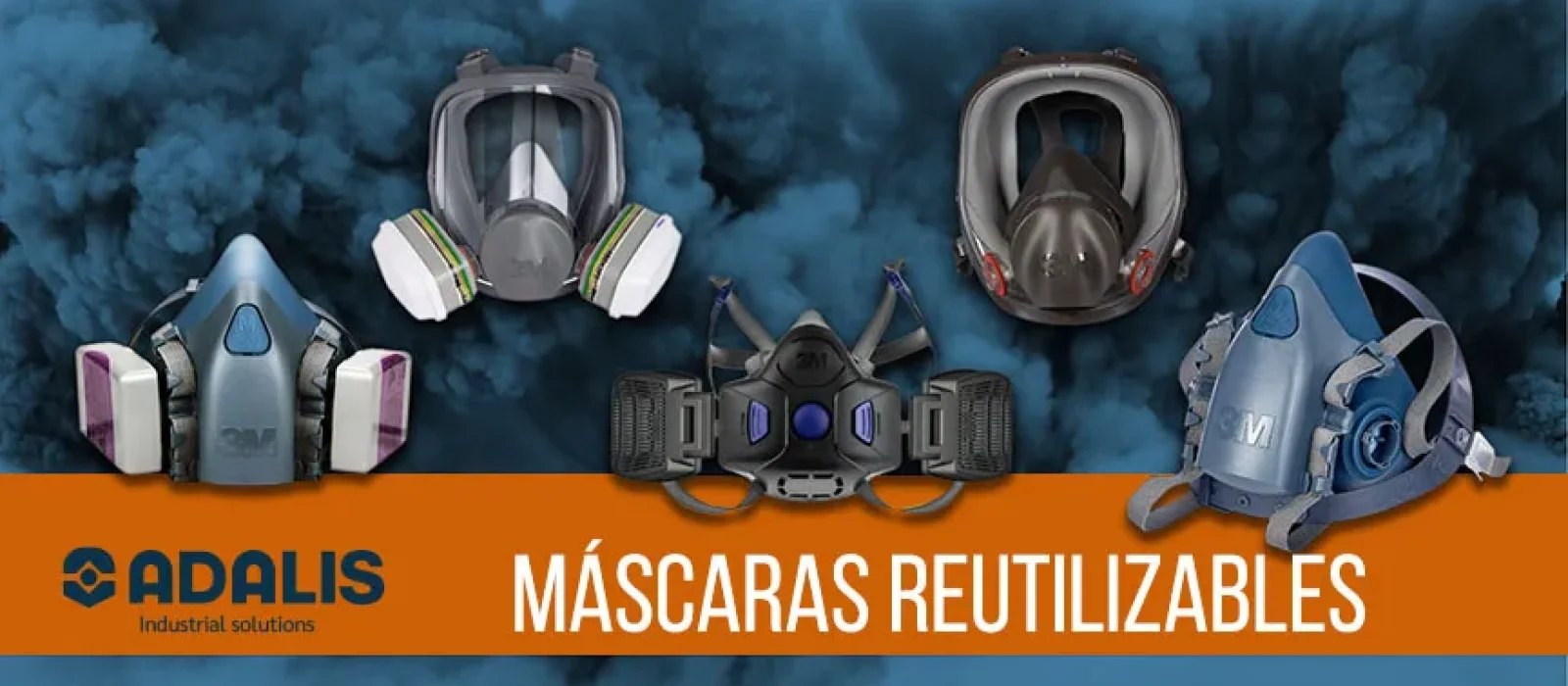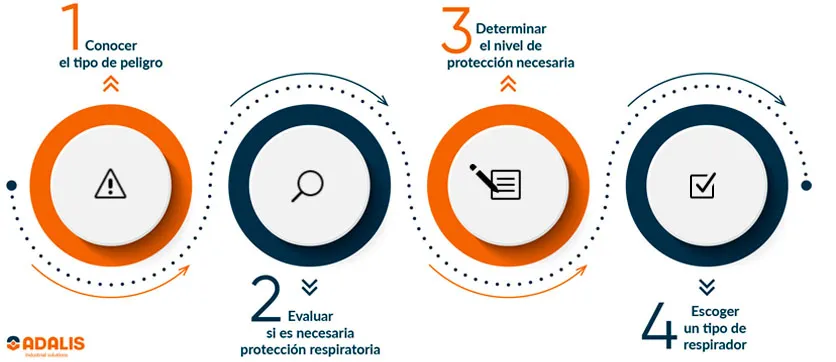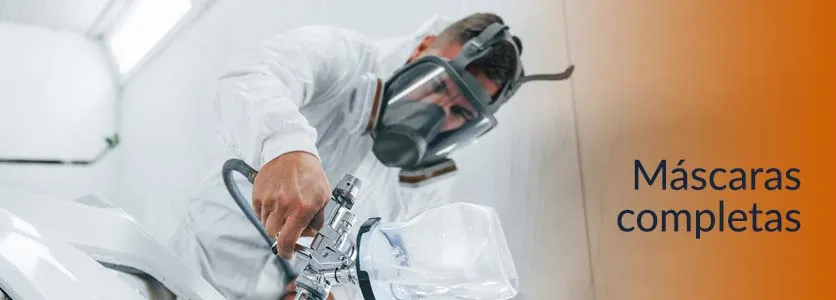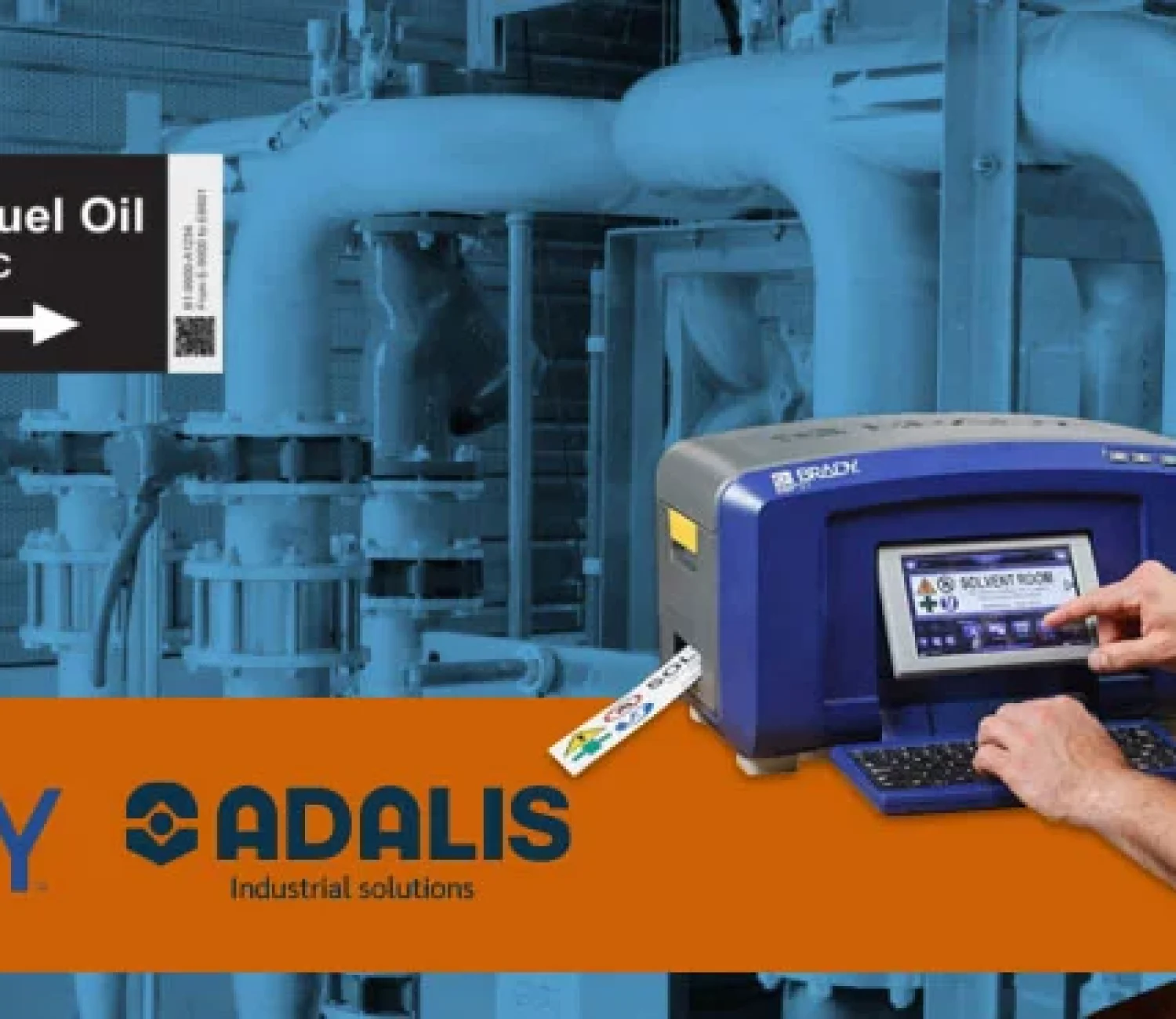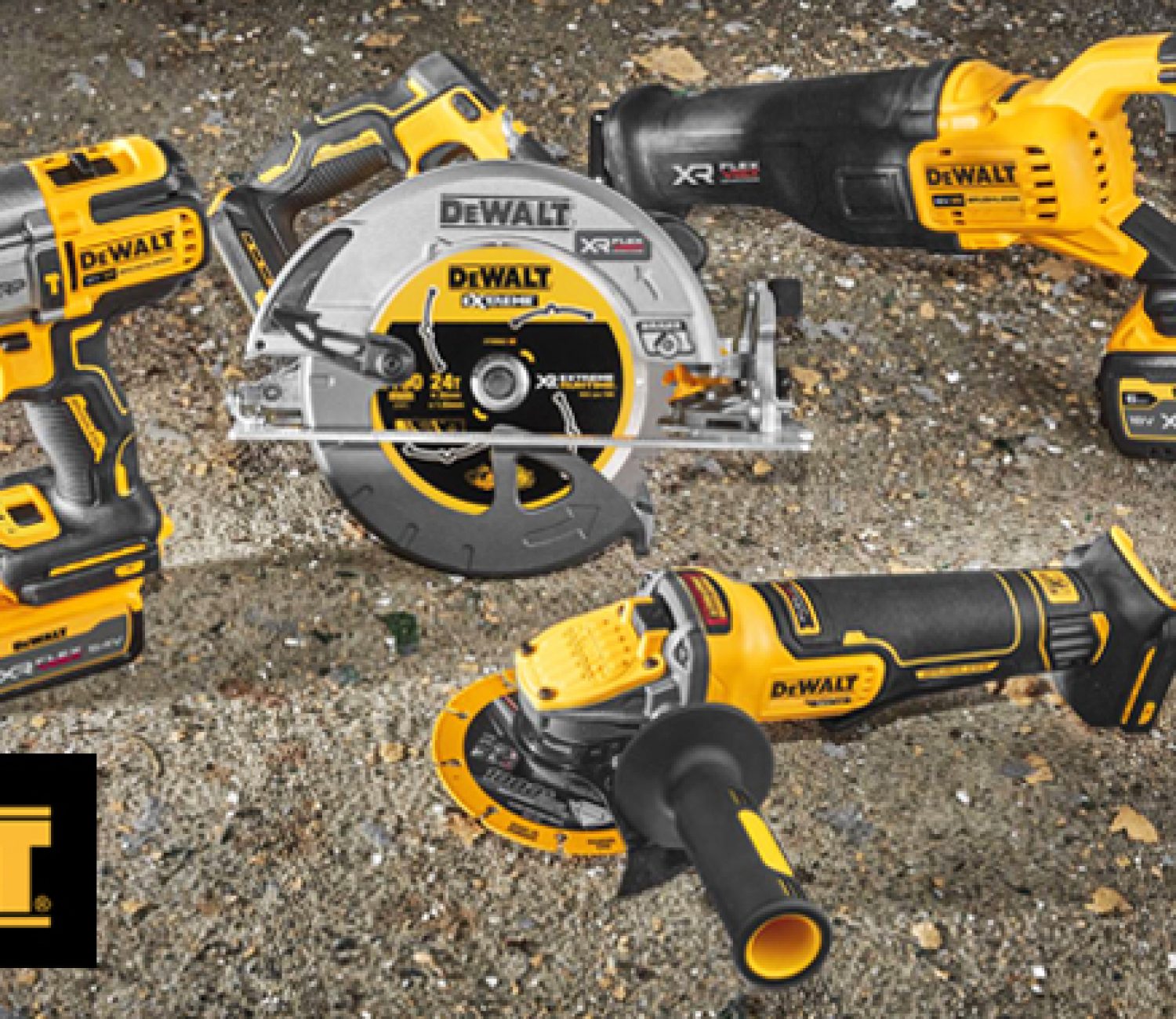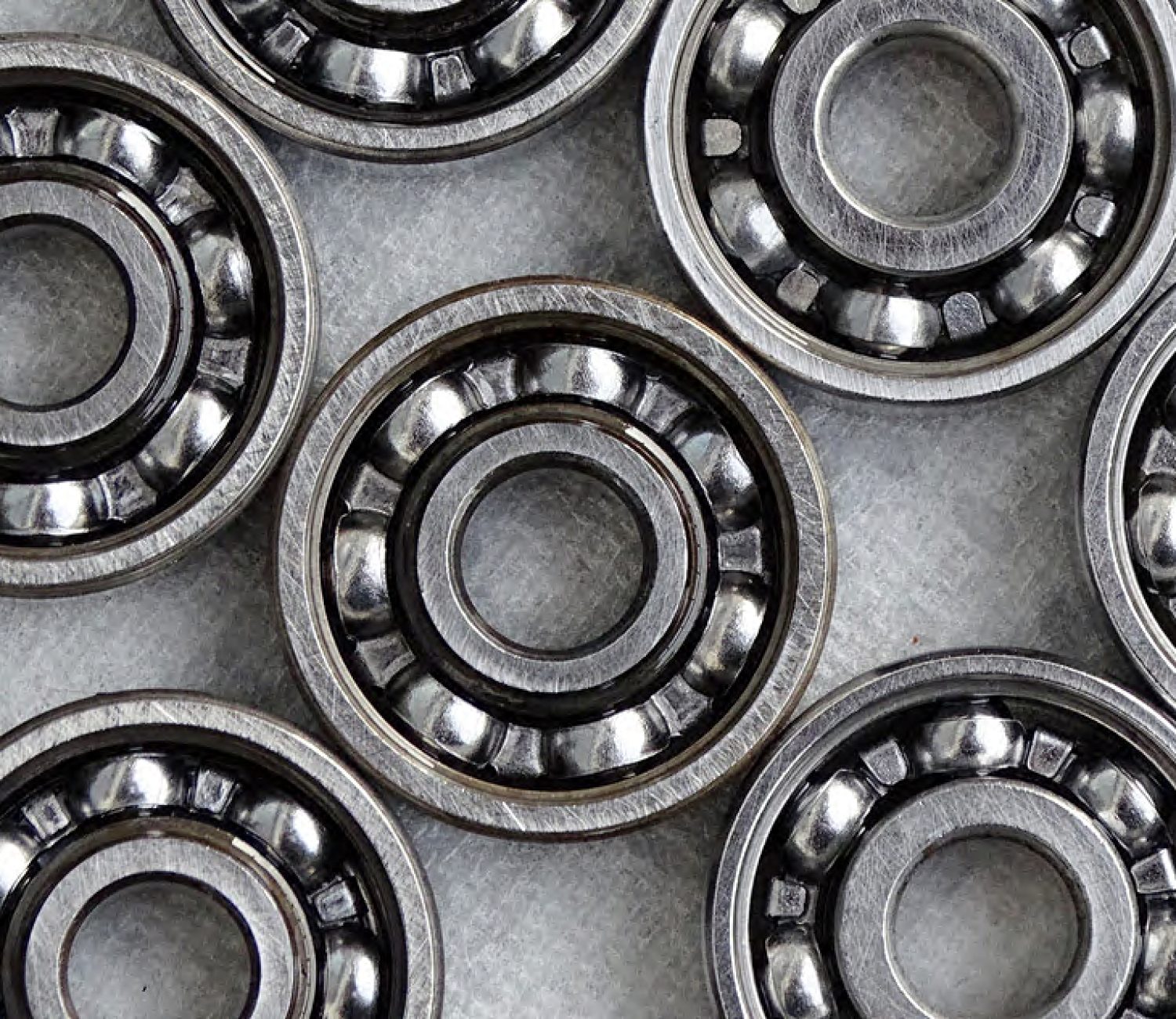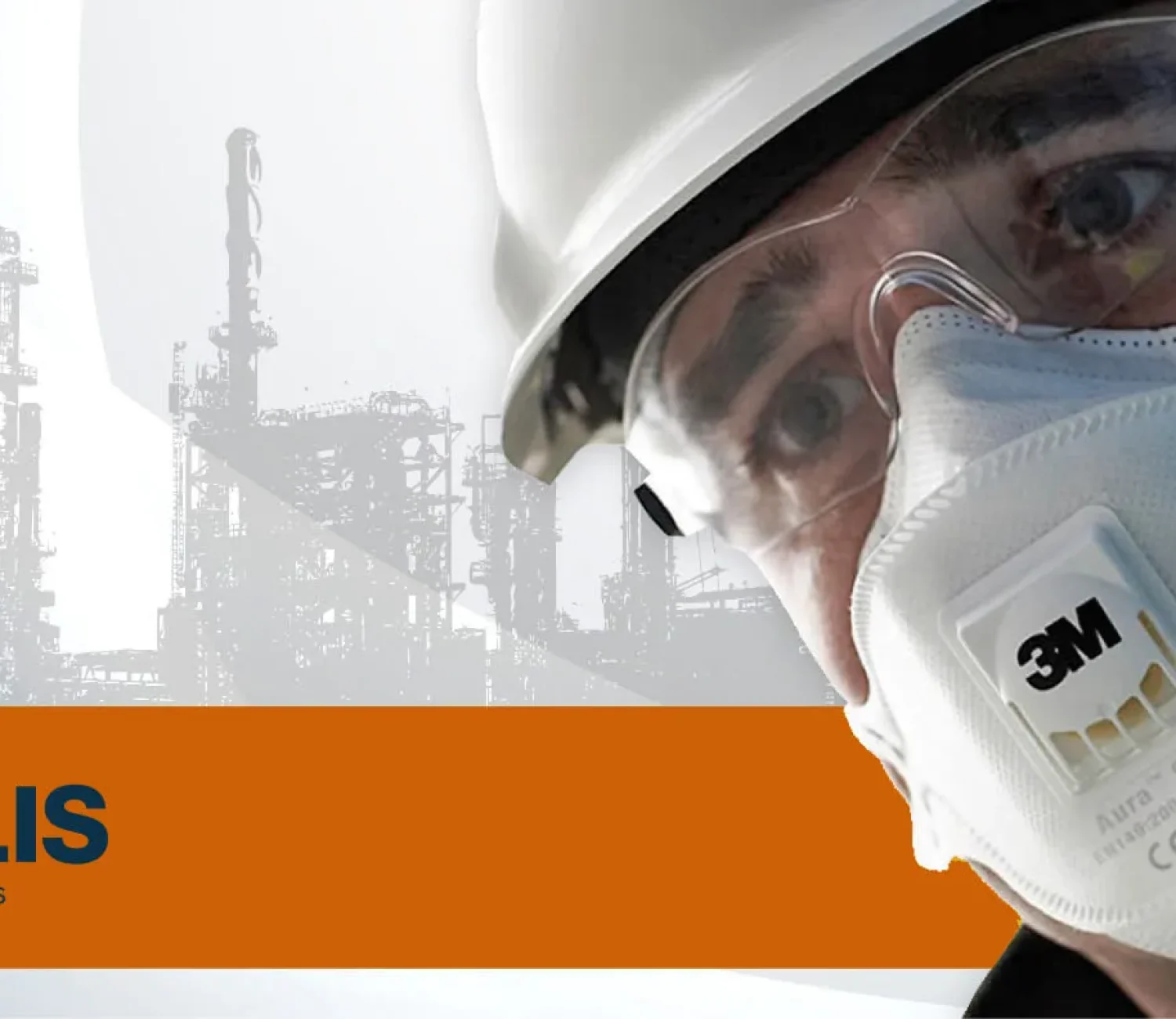In this blog post we will focus on getting to know all the details about the reusable masks and its main characteristics.
It is well known that work protection equipment is of vital importance in environments where the chances of a risk factor occurring are high.
For this reason, the reusable masks are the PPE that will help us to protect the respiratory tract in certain jobs and sectors.
When to use reusable masks?
Before telling you what types of reusable masks exist, we must know when and under what circumstances to use this kind of equipment.
To do so, follow this simple guideline consisting of 4 steps that will help us evaluate and determine the right place and the right time.
-
- Step 1: Know the type of hazard.
- The first step is to know whether the work environment contains a particulate hazard (particles such as hazardous dusts or fibers), a gas or vapor hazard (such as solvent vapors or chlorine gas), or both types of hazards.
- Step 2: Evaluate if respiratory protection is necessary.
- Secondly, it will be necessary to review the levels of exposure to which we are subjected to the substances analyzed. Normally, the results are measured in PPM (Parts Per Million) or mg/m (milligrams per cubic meter of air).
- In the event that these levels are higher than those permitted by the Occupational Safety and Health Administration (OSHA), the use of respiratory protection is mandatory.
- However, we always recommend its use (even if not required by law) whenever there is exposure to chemical and/or physical substances.
- Step 3: Determine the level of protection required.
- To determine the level of protection factor required by the workplace, we must calculate it from the following formula (Exposure limit / Permissible exposure limit).
- For example, half-mask respirators with filters and cartridges have an assigned protection factor of 10.
- Step 4: Choose a type of respirator.
- Lastly, once the protection factor has been determined, we can select the reusable masks that best fit our workplace.
- A point to consider in addition to the environment and hazard, is the comfort of the respirator.
- For jobs that turn out to be very strenuous, the reusable masks that are lightweight and aerodynamic will provide extra value that should not be underestimated.
Types of reusable masks
There are different types of respiratory protection to be selected depending on the risks to which we will be exposed.
Below we present them and comment on their peculiarities:
Full masks
Full face masks are respiratory protective equipment covering the eyes, nose, mouth and chin. They are mainly used for their protection against harmful vapors and gases, as they are fitted with protective filters.
In addition, they have connectors that allow air to pass through. The exhaled air exits through other connectors.
Half masks or half masks
Half masks, also known as half masks, are a type of respirator that covers only part of the face. Therefore, it does not protect against any type of injury to other parts of the head.
There are half masks with one and two filters (also known as single and double pattern masks).
Self-filtering FFP respirators
Self-filtering respirators, also known as disposable respirators, are the simplest respiratory protection equipment. This is because they do not require any maintenance.
This type of mask protects against the risks produced by the inhalation of environmental pollutants (particles or aerosols). Important: Does not protect against vapors or gases.
There are 3 classifications based on their performance, which are governed by the European standard UNE-EN 149: FFP1, FFP2 and FFP3.
In a new post that we will create later on, we will go deeper into this type of masks.
At ADALIS Industrial Solutions we have the disposable masks mentioned in this post.
Our experience and the close collaboration we have with 3M allow us to solve any possible doubts you may have about which type of mask to use, contact us with our professional team.


